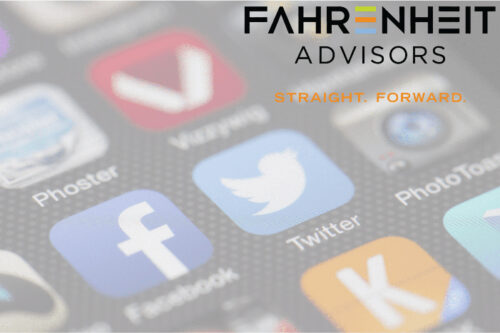Social Media and Your Brand: 3 Ways to Mitigate the Risk

Warren Buffet famously said, “It takes 20 years to build a reputation and five minutes to ruin it.” Every day, social media users confidently reply, “Mr. Buffet, hold my beer.”
Business leaders have learned that social media can be a great platform to market your brand and reach your target market with relative ease. Wise leaders are also aware that social media can be just as detrimental as it is beneficial, especially if risk management has not been integrated into the broader branding strategy.
In the brief moments after an ill-worded post, millions of people will have seen it, and will be posting their responses just as quickly. The issue may not even originate on social media (remember Wells Fargo’s recent conduct issue?), but wherever consumer response enters social media, risk exists. Social media has changed how consumers engage with companies forever. Not only has social media offered a platform for marketing purposes, but also offers a powerful vehicle to consumers to communicate their thoughts and perceptions in a way that is very immediate, very public, and potentially very embarrassing.
Similar to the risk management initiatives in place for other areas of your organization (i.e. regulations and compliance, internal controls, business continuity, etc.), an organization must consider the risks of social media even if they do not engage in social media.
Understanding the Risk
The key risks that a brand must appropriately manage and mitigate are:
- brand attacks
- brandjacking
- legal risks
While a culprits’ motivations may differ wildly (from someone’s unintentionally clumsy word choice to a troll who intentionally cultivate chaos), in all scenarios, the responsibility of guarding against offensive, sensitive inappropriate content lies with the company.
In brand attacks, a large number of people post negative comments on social media. The source of the attacks could be activists, trolls, and more than likely stem from customer complaints. Outcomes can include boycotts, revenue and market share losses, and to the demise of a brand.
Brandjacking is where fake brand accounts, spam, and phishing can occur on a company’s site or a fake account to either gain brand equity or to destroy it.
Legal is the leaking of confidential information (many instances of classified information being posted by individuals in the military – one instance where an individual posted a selfie that had computers in the background with classified data), wrongdoing within an organization (i.e. Wells Fargo), and defamation, harassment, and discrimination that is of key concern to a brand’s reputation.
So, how does a company or organization offset the risk of social media while capitalizing on the value? Following are three ways to mitigate the risk that social media poses to any organization:
1. Implement and Monitor a Social Media Listening Tool
Brands need to know real time what people are saying about them on social media. Staying in front of issues before they have the opportunity to get out hand is of utmost importance. Metrics are a big part of this monitoring process. A brand can monitor and measure negative comments/responses, overall sentiment, hashtags, issue resolution rates, response times, customer and many other indicators of how the brand is faring in the marketplace.
It is a myth to believe that social media is completely free – it is this monitoring system (and the subsequent analysis) where the real costs lie. For any business leaders who receive pushback on investing in monitoring software, remember that a company’s reputation has intangible value that if damaged, could lower the brand’s value or even destroy the brand completely.
2. Institute a Policy to Guide All Interactions on Social Media
A social media policy is a necessary part of any risk mitigation brand strategy. Drafted with the brand’s value proposition in mind, this document would set out company expectations and protocol. The policy should include:
- a moderation policy (detail the responses that are allowable),
- an escalation policy (i.e. how many tweets before a defined action needs to take place), and
- define processes such as access permissions, system and designated approvals for postings, and crisis response guidelines.
Once developed, all employees should be trained on the policy, should understand the brand’s target market, and should understand acceptable ways of responding.
3. Develop a Crisis Response Protocol
Crisis response guidelines/protocol must be included within the broader social media policy. This response guide will provide protocol to help determine – first and foremost! – whether a PR crisis is really occurring (eg., one serial complainer might not qualify as serious, while multiple complaints about a new product might indeed be serious).
If significant enough, the firm may want to pause outbound messages so that it does not appear that they are tone deaf, lack empathy, or are insensitive to the issue at hand. Next, the brand should acknowledge the issue and respond on social media (even if with just a note that they are investigating; tone should be sensitive and wording should indicate the intention to be transparent on the issue). The response must be timely before a small issue has time to escalate. Then, the brand should monitor the reaction on social media to understand impacts, consider appropriate steps to mitigate, and remain alert for escalation (or de-escalation).
What tricky situations has your organization faced in its social media journey, and how have you dovetailed social media practices with business risk management? Have you considered your company’s social media within your broader risk management strategy? We would love to hear about your experiences and learn more about how Fahrenheit can help – Experts@FahrenheitAdvisors.com.
About the Author
 Ann Wilson brings more than 20 years’ experience in accounting/audit, project, and change management in a variety of industries to Fahrenheit’s clients. Ann, who recently completed her MBA, possesses a wide spectrum experience, including month-end close, budget/forecasting, cost reduction/avoidance, reporting & analysis, financial/trend analysis, risk management, payroll, asset management, Sarbanes Oxley, SEC reporting, and more. Ann particularly enjoys helping clients achieve continuous improvement through creating efficiencies, reducing risk, reducing costs, and achieving desired business results.
Ann Wilson brings more than 20 years’ experience in accounting/audit, project, and change management in a variety of industries to Fahrenheit’s clients. Ann, who recently completed her MBA, possesses a wide spectrum experience, including month-end close, budget/forecasting, cost reduction/avoidance, reporting & analysis, financial/trend analysis, risk management, payroll, asset management, Sarbanes Oxley, SEC reporting, and more. Ann particularly enjoys helping clients achieve continuous improvement through creating efficiencies, reducing risk, reducing costs, and achieving desired business results.